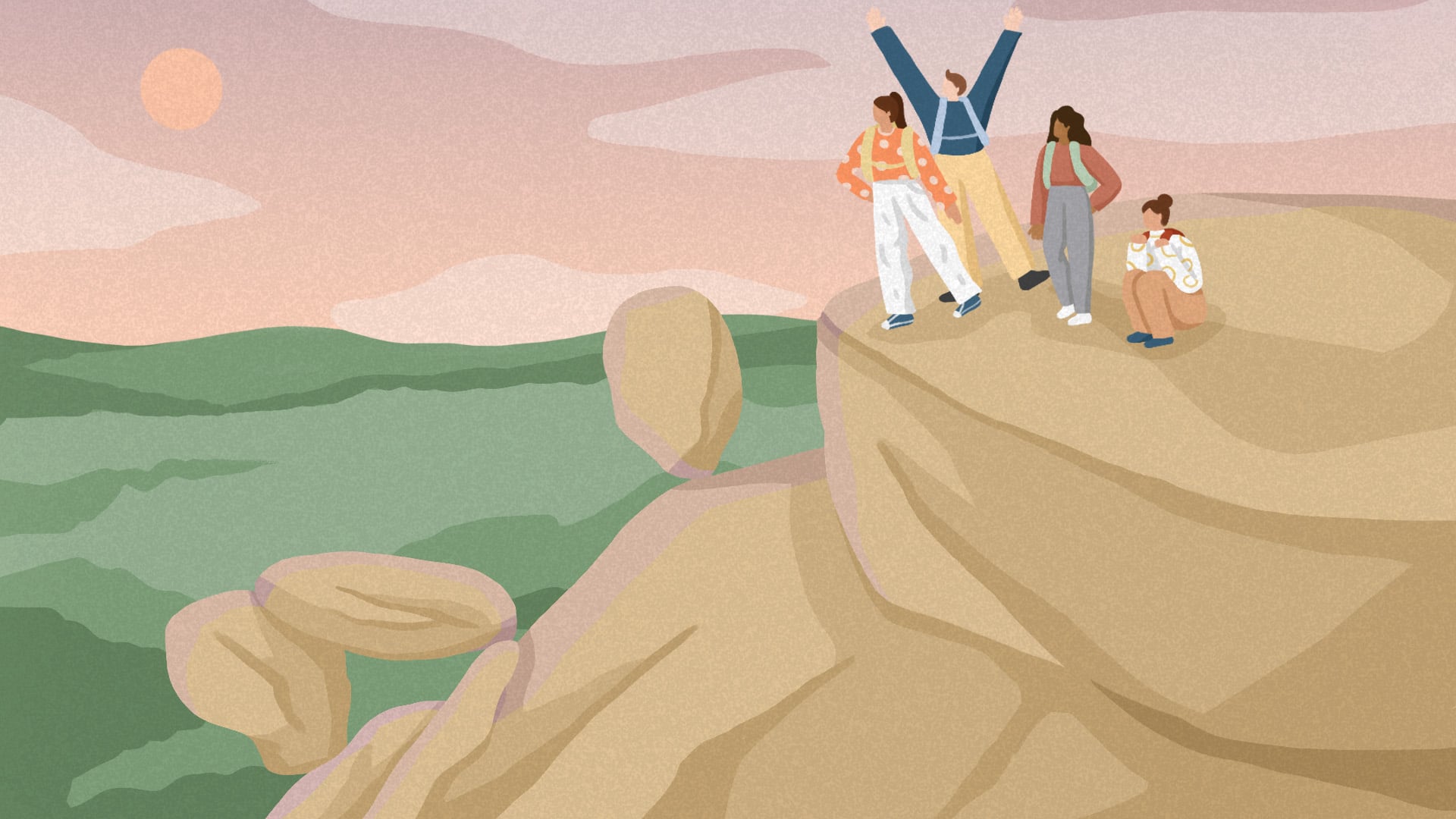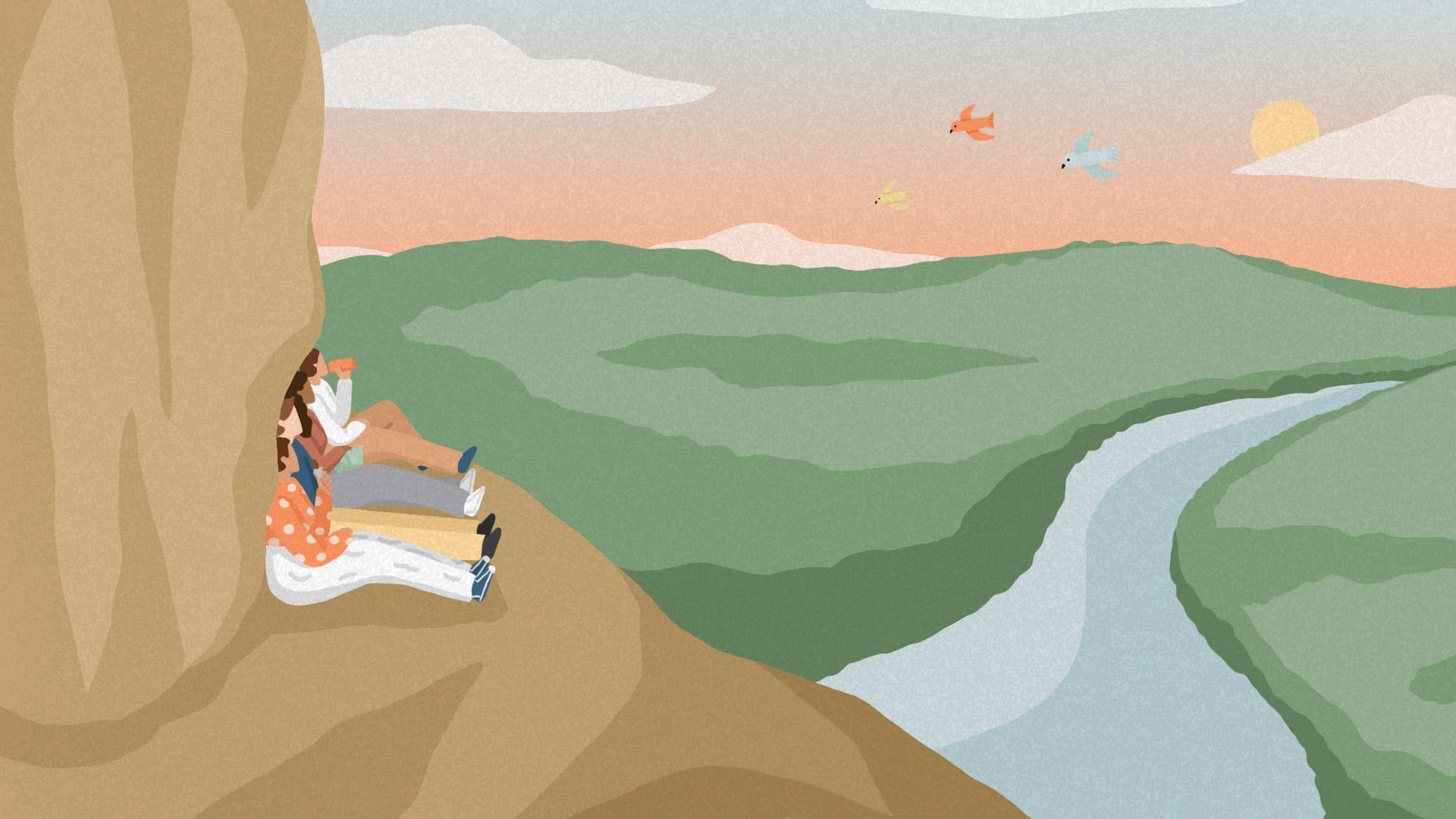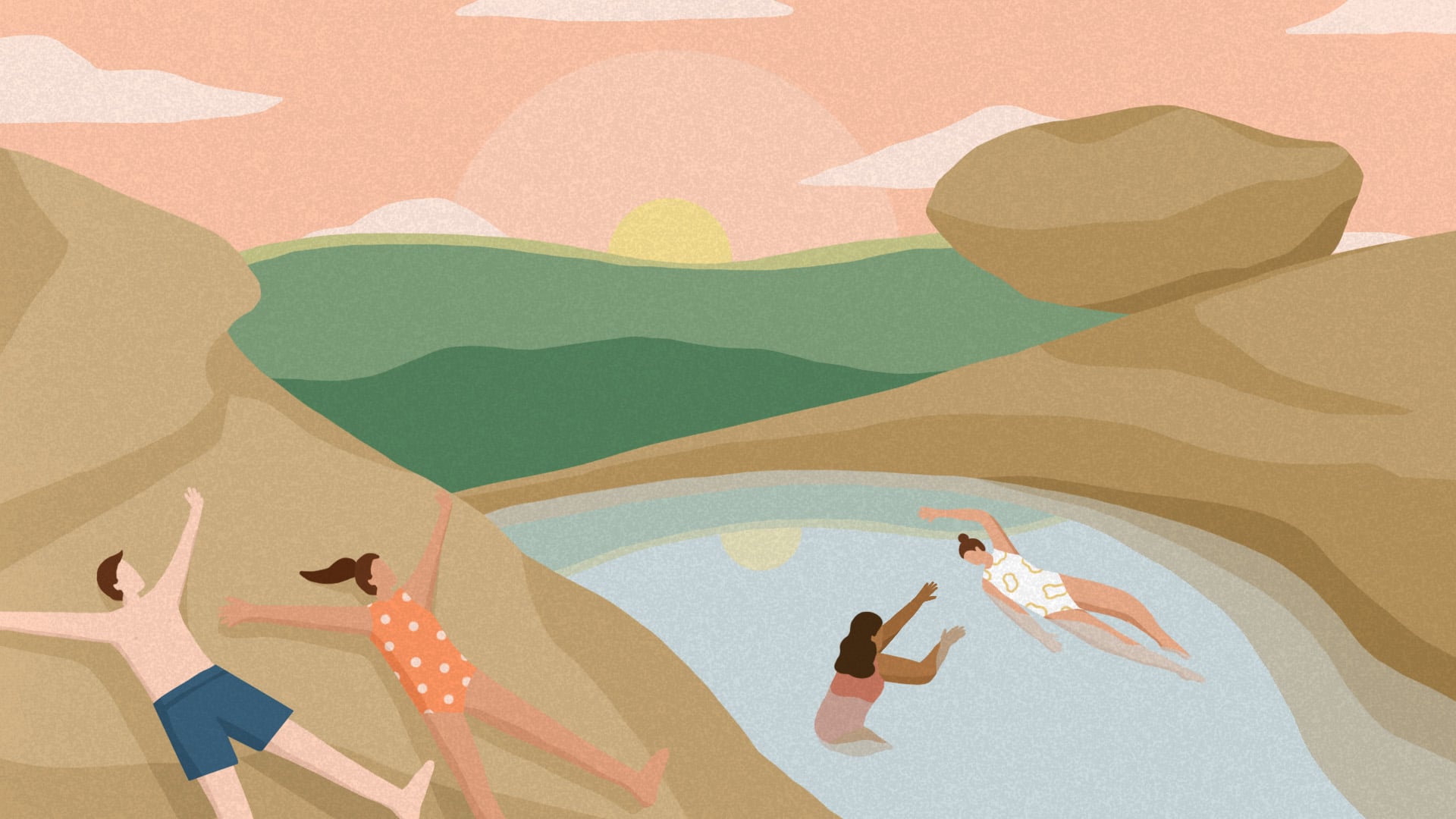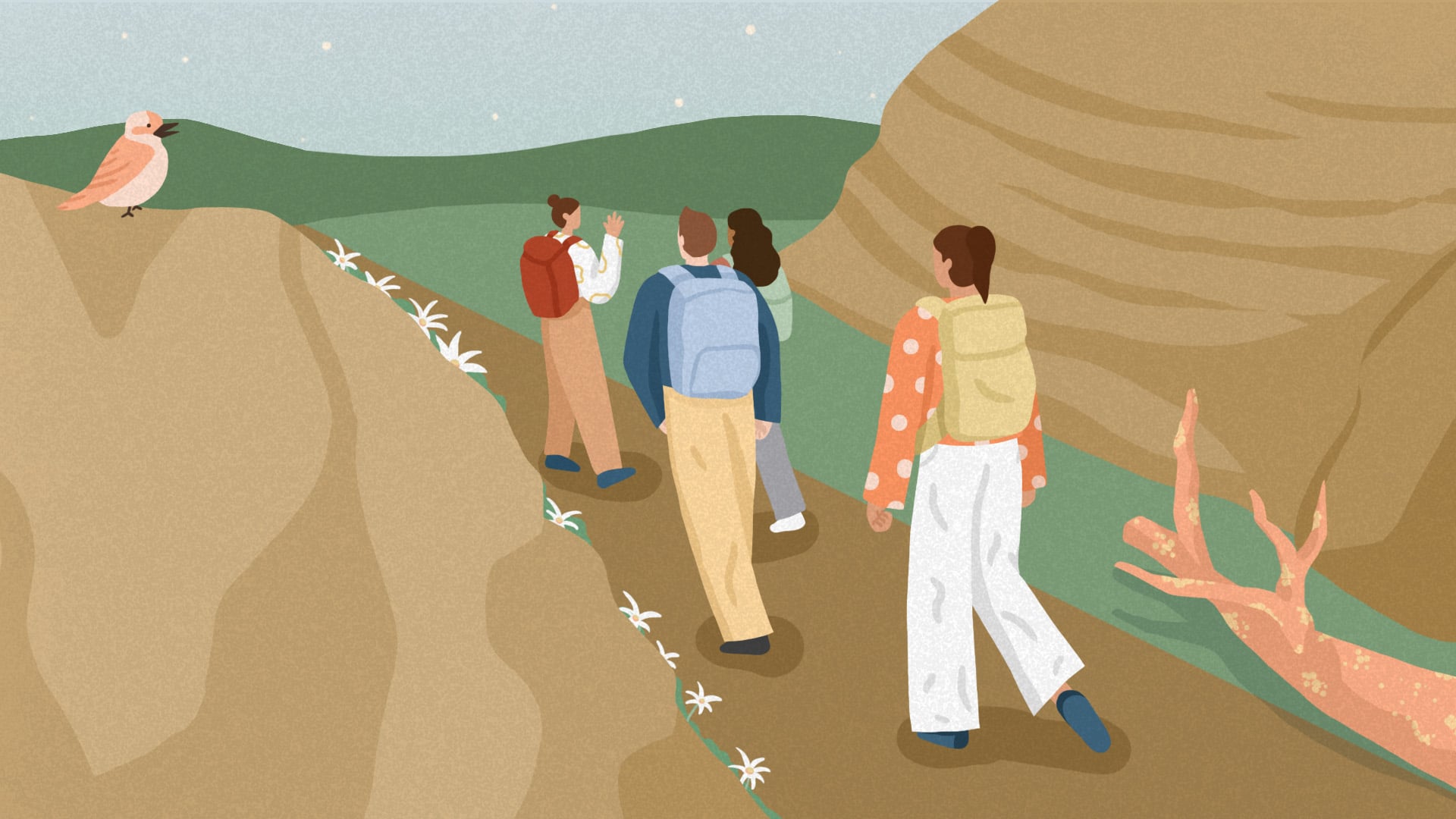The higher I climb up the ancient granite outcrop in Girraween National Park on Queensland’s Granite Belt — with thousands of hectares of bushland sprawling beneath me and precariously balanced boulders dotted all around — the more I feel part of a living, breathing landscape around me.
As I listen to the breeze rustling the leaves of a nearby eucalyptus, feel the late spring sunshine warm my bare shoulders, and consider how the granite beneath my feet was carved into shape by millions of years of water, wind and ice erosion, I am suddenly acutely aware of my place in the order of things and am full of earth praise.
This rush of ecological tenderness might sound dramatic, but it often washes over me on hiking trips like this one with my husband and two friends. The longer I spend in nature, the stronger the emotion gets. And since my mum texted the term to me a month ago, I now have a name for this flood of feeling: soliphilia.
Coined in 2009 by Glenn Albrecht, a philosopher and professor of sustainability at Murdoch University in Perth, the term soliphilia expresses our love of the interconnectedness between each living thing, its ancestors and the environment it evolved in.

It also encompasses our willingness to accept the responsibility to protect and conserve nature at all costs and is the antidote to solastalgia: another term created by Albrecht to express the deep sadness that comes from witnessing the destruction of our planet.
Soliphilia is, in my experience, most powerfully inspired by hikes out in nature, which are also a salve for our technology-addled brains.
Studies in Finland and Japan have shown that being immersed in nature makes our brains healthier, increases our attention span and creativity, and lowers blood pressure, heart rate and stress levels. Because our pirouetting thoughts slow down when we’re in the wild, we can see the beauty of the world around us more clearly and are reminded of all there is to save.
Soon, our small group reaches the top of the ridge, and we sit with our backs against a gigantic granite boulder towering 10 meters (33 feet) above us while we snack on trail mix and gaze into the valley below.

We fall into a discussion about the Indigenous Aboriginal communities who were, for 50,000 years, the custodians of this land, which they stewarded with concepts of reciprocity, ancestral honoring and deep reverence.
Talk soon turns to the events of the past two years: the pandemic, the raging wildfires and floods, the revelations of human inequality. “Where did we lose our way?” we wonder. And how can we get back on track?
We can’t find solid answers. But as we walk back down the outcrop, past fuzzy white flannel flowers, a fallen paperbark trunk blooming with orange fungi, and a cackling chubby kookaburra, I’m certain these soliphilia-inducing hikes are a good place to start looking for them — especially, it seems, if they’re taken mindfully, with minimal impact on the land, following the kind of guidelines outlined by the nonprofit Leave No Trace.
These steps include leaving plants, rocks and other natural objects where you find them; not touching, feeding or getting too close to wild animals; and taking trash with you.

Later, we swim in a crisp, clear waterhole then lay like starfish on the sun-warmed rocks. I look up at the blazing blue sky through blooms of golden wattle and make the same promise I make whenever I leave a place of such astonishing natural beauty: I will take better care of you. And I will.




